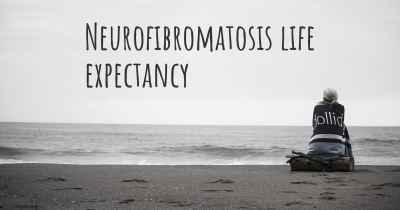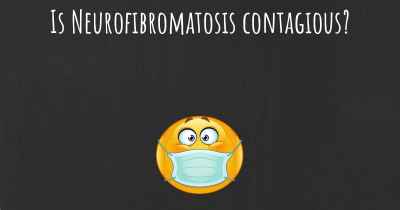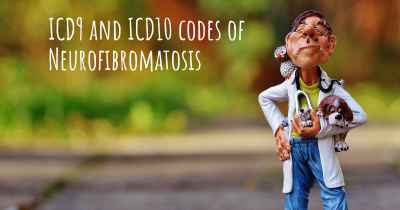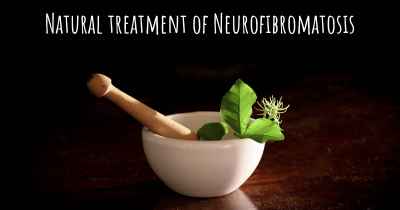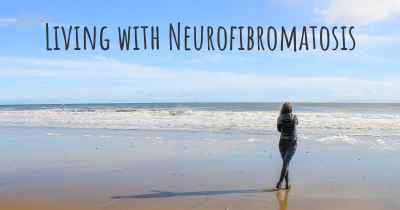14
How do I know if I have Neurofibromatosis?
What signs or symptoms may make you suspect you may have Neurofibromatosis. People who have experience in Neurofibromatosis offer advice of what things may make you suspicious and which doctor you should go to to receive treatment

Translated from french
Improve translation
diagnosis, it takes at least two of the following seven criteria
1 – A related party of first degree achieved (parent, brother, sister or child).
2 – At least 6 café au lait marks having a diameter greater than 1.5 cm after puberty or to 0.5 cm before puberty.
3 – The presence of lentigines axillary or inguinal.
4 – At least two neurofibromas of any type or a plexiform neurofibroma.
5 – A glioma of the optic nerve.
6 – At least two nodules Lisch (or hamartomas iriens).
7 – bone injury characteristic (pseudoarthrosis, dysplasia of the sphenoid, or thinning of the cortex of long bones).
In adults, the diagnosis is usually easy enough to do on the clinical manifestations. It may be more difficult to establish in children under 5 years of age who may not have tasks, coffee and milk. In fact, neurofibromas appear later at the time of pre-adolescence. Lisch nodules are found only in 10% of children under the age of two years, while they are present in more than 90% of adults. When clinical manifestations are still few in number, the family history may help in diagnosis. X-rays of long bones can also be helpful, because the bony abnormalities are present from birth. Finally, MRI can be used in a small number of cases highlight a glioma asymptomatic optic tract.
Confirmation of the diagnosis by genetic analysis is not useful. The clinical manifestations are sufficient for the diagnosis. Genetic analysis is currently indicated in three situations :
1) the early diagnosis in a child with manifestations incomplete,
2) the diagnosis of atypical forms,
3) when considering a prenatal diagnosis or preimplantation diagnosis. The genetic abnormalities that are possible are very numerous and difficult to identify.
Each of the methods currently available does not allow to detect that a certain percentage of abnormalities, which requires the laboratories to combine several techniques to increase the detection rate. In isolated cases, where it is in the patient a mutation in a new (de novo), the only solution is to isolate the mutation. This direct search is rarely done currently. The detection rate of the mutations is a little less than 90%.
In the familial forms where there are at least two people, it is possible to carry out a study of the molecular indirect.
1 – A related party of first degree achieved (parent, brother, sister or child).
2 – At least 6 café au lait marks having a diameter greater than 1.5 cm after puberty or to 0.5 cm before puberty.
3 – The presence of lentigines axillary or inguinal.
4 – At least two neurofibromas of any type or a plexiform neurofibroma.
5 – A glioma of the optic nerve.
6 – At least two nodules Lisch (or hamartomas iriens).
7 – bone injury characteristic (pseudoarthrosis, dysplasia of the sphenoid, or thinning of the cortex of long bones).
In adults, the diagnosis is usually easy enough to do on the clinical manifestations. It may be more difficult to establish in children under 5 years of age who may not have tasks, coffee and milk. In fact, neurofibromas appear later at the time of pre-adolescence. Lisch nodules are found only in 10% of children under the age of two years, while they are present in more than 90% of adults. When clinical manifestations are still few in number, the family history may help in diagnosis. X-rays of long bones can also be helpful, because the bony abnormalities are present from birth. Finally, MRI can be used in a small number of cases highlight a glioma asymptomatic optic tract.
Confirmation of the diagnosis by genetic analysis is not useful. The clinical manifestations are sufficient for the diagnosis. Genetic analysis is currently indicated in three situations :
1) the early diagnosis in a child with manifestations incomplete,
2) the diagnosis of atypical forms,
3) when considering a prenatal diagnosis or preimplantation diagnosis. The genetic abnormalities that are possible are very numerous and difficult to identify.
Each of the methods currently available does not allow to detect that a certain percentage of abnormalities, which requires the laboratories to combine several techniques to increase the detection rate. In isolated cases, where it is in the patient a mutation in a new (de novo), the only solution is to isolate the mutation. This direct search is rarely done currently. The detection rate of the mutations is a little less than 90%.
In the familial forms where there are at least two people, it is possible to carry out a study of the molecular indirect.
Posted Oct 11, 2017 by Robert 1750
